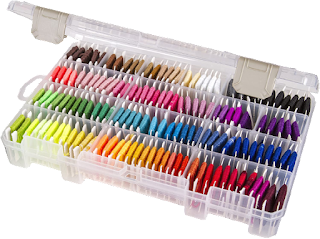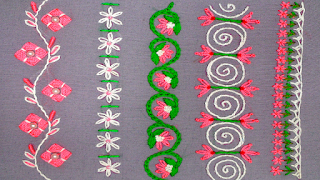What is Embroidery?
The craft of embroidery involves
adorning fabric or other objects with yarn or thread. It is an age-old craft
that has been used for ages to adorn textiles such as garments, bed linens, and
other items. It is possible to embroider by hand or by machine, and a variety
of ornamental techniques, such as applique, cross-stitch, satin stitch, and
others, can be used. Clothing, linens, home decor, as well as other types of
things like purses and caps, can all be embellished with embroidery to produce
a wide variety of ornamental items. Many individuals find embroidery to be a
calming and delightful activity. It is frequently used to produce beautiful and
detailed designs.
Where to use the borderline embroidery design
A border pattern around the hem of a skirt, dress, or pair of pants can provide aesthetic appeal.
- On the edges of linens: Towels, napkins, or tablecloths can look more polished and finished if they have a border design embroidered on the edges.
- On a shirt or jacket's sleeves or collar: Adding a border design to a shirt or jacket's sleeves or collar might lend some interest to an otherwise simple piece of clothing.
- On a quilt or throw: Borderline embroidery can be used to give the edges of a quilt or throw some decorative flair.
- On a purse or tote bag: Adding an embroidered border design to the bag's edges can give it a more polished and finished appearance.
- Overall, borderline embroidery can be used to lend a decorative touch to fabric or apparel in a variety of contexts.
The Best Hand Embroidery Thread to Use
 |
| Embroidery thread |
.png) |
| Metalic embroidery thread Learn about metalic thread |
 |
| 140 colorful thread |
.png) |
| Prism thread Learn more |
Overall, your own preferences and the precise requirements of your project will determine which embroidery thread is best for you.




0 Comments